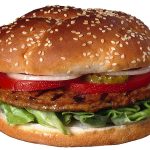
Fresh vegetables are nutrient-rich diet mainstays and can be inexpensive when bought in season. Simple selection tips will enable you to choose the best produce to turn into delectable meals and, just as important, to store your vegetables to maximize flavor and “shelf life.” Tips for Picking Produce Broccoli should be emerald green with a head of tight florets and a moist stalk. The stalk shouldn’t look shriveled or dried out. Store in the fridge in a closed produce bag. Carrots should be firm and bright orange with no green tinges or soft brown spots. If the tops are attached, they should be bright green and bushy (use them to add flavor to soups). Store in a closed produce bag in the fridge. Eggplant should feel firm and somewhat heavy in your hand. Its skin should be free of blemishes and have glossy deep purple shine. Refrigerate in a closed produce bag. Onions should be firm to the touch with no soft areas. They should have tightly closed, papery skin with no mold or dusty dark spots. Store on a cool, dark spot, such as a deep kitchen drawer. Spinach should have deep green leaves without creases or dark spots. Refrigerate in a closed produce bag lined with paper towel. Tomatoes should be slightly soft to the touch with the stems on, if possible, and… read on >




























-300x200.jpg)







-300x169.jpg)
